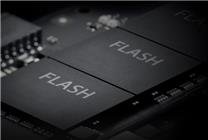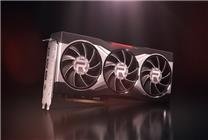Summary
- AI Demand Driving Hard Drive Prices: The rapid rise in demand for AI data centers is leading to sharp increases in hard disk prices, with both HDD and SSD facing shortages.
- Key Players and Market Trends: Major suppliers like Seagate and Western Digital have seen stock prices triple, while SSD capacities continue to surpass HDD offerings.
- Future of Flash Memory: QLC flash memory is expected to dominate the market, with PLC technology on the horizon but facing technical challenges.
The Impact of AI on the Hard Drive Market
As AI continues to permeate various industries, the hard disk drive sector is experiencing significant upheaval. The demand for data storage, spurred by the surge in AI applications, is driving prices skyward and creating shortages in both HDD (Hard Disk Drives) and SSD (Solid State Drives) markets.
Current Market Dynamics
The hard disk market is primarily dominated by three major players: Seagate, Western Digital, and Toshiba. Among these, Seagate and Western Digital are the leading suppliers. Remarkably, stock prices for both companies have tripled over the past year, highlighting the dramatic financial impact of AI’s rising influence.
Manufacturers are grappling with supply shortages, particularly for mechanical hard drives. Faced with escalating demand, these companies have indicated that they will not ramp up production significantly. Instead, they are focusing on enhancing drive capacities specifically designed to cater to AI clientele.
The SSD Surge
The SSD market is similarly affected, with notable out-of-stock conditions and rising prices, particularly for ultra-large-capacity SSDs, which are exceeding 200TB. These drives not only outperform traditional HDDs in terms of capacity but also excel in performance, thermal management, and energy efficiency. The only caveat is their higher price point, which does not appear to deter the burgeoning demand from AI applications.
Current market strategies are heavily focused on investing in two-terabyte QLC (Quad-Level Cell) NAND flash memory, with many manufacturers already securing production commitments extending into 2026. If this trend persists, QLC is poised to overtake TLC (Triple-Level Cell) NAND as the predominant flash storage solution by 2027.
Looking Ahead: The Evolution of Flash Memory
For AI data centers, having larger storage capacities is paramount. The future of flash memory seems to be leaning toward innovative technologies like PLC (Penta-Level Cell), which can potentially store five bits of data per cell. This advancement would offer approximately 25% more capacity than traditional QLC.
However, developing PLC technology isn’t without its challenges. Concerns regarding performance and reliability persist, with P/E (Program/Erase) cycle longevity potentially falling below the 100-cycle mark. Although there was significant optimism for earlier PLC product releases—initially anticipated around 2025—those timelines have shifted as the industry recalibrates expectations in light of current demands.
In response to the AI boom, manufacturers are considering an aggressive push to advance PLC technology, aiming to launch market-ready products sooner rather than later. However, it remains clear that the introduction of PLC solutions may still be years away, with further refinements needed for existing TLC and QLC technologies before PLC can confidently emerge.
Conclusion
The ongoing AI revolution is reshaping the hard drive market in profound ways. As companies adapt to meet the insatiable data demands brought on by artificial intelligence, we can expect ongoing fluctuations in pricing and availability. The advancements in flash memory technologies, particularly with QLC and potential PLC developments, will undoubtedly influence the landscape further, driving innovations that ensure the storage sector keeps pace with the rapid evolution of AI.





